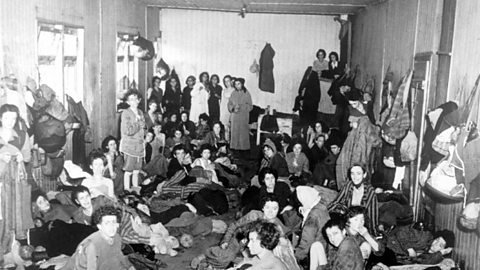The nature of the Nazi Government
The Nazi Government of the 1930s developed along the lines of the ideology that Hitler described in his book, Mein Kampf.
- The Führer Principle - there must be a single leader of a single party, holding complete power.
- Racism - Germans were the 'Master Race' as they were descended from the Aryans and all other races were inferior. Jewish people and Slavs were regarded as subhuman. All inferior races had to be removed or made slaves of the Master Race.
- Lebensraum (living space) - the territorial expansion of Germany was required in order to allow the Master Race to grow.
- Autarky - meaning that Germany must be economically self-sufficient and not dependent on goods imported from abroad.
Control of Germany
Hitler introduced many policies and measures to ensure the Nazis remained in control, once he declared himself Führer in 1934 after the death of President Hindenburg.
Control through fear and oppression
The Nazis created a terror-state whereby those living in Germany were too scared to disobey Nazi laws. This was achieved through intimidation and brutality.
The Gestapo, April 1933
- The Gestapo were the Nazis secret police who gathered intelligence on people living in Germany.
- They had over 150,000 informants throughout the country who would report any anti-Nazi sentiment to the Gestapo.
- The Gestapo and their informants did not wear uniforms and, therefore, Germans did not know when they were being spied on. This created tension and fear throughout the country.
- They had powers to arrest and detain those people who were considered enemies of the state/Nazi Party. These people were often violently questioned before being released or imprisoned.
- People’s courts were used to guarantee that those who the Nazis considered to be enemies were charged with treason and interred in concentration camps.
The SS
By 1934, the SS had been put in charge of protecting Germany from internal and external enemies. The SS also controlled the concentration camps where ‘undesirable people’ were imprisoned. The first concentration camp was established in Dachau in 1933.
These ‘undesirable people’ included:
- political opponents
- homosexuals
- criminals
- gypsies
- Jewish people
- religious figures
- any out-spoken critics (including journalists and artists)

Life in the concentration camps was extremely harsh. Prisoners were made to work in horrendous conditions. Stories of what prisoners experienced increased fear among the German population.
The arrest and disappearance of thousands of people, then their subsequent reappearance with tales of the concentration camps, terrified the population. This meant that there was little opposition to the Nazis in the 1930s.